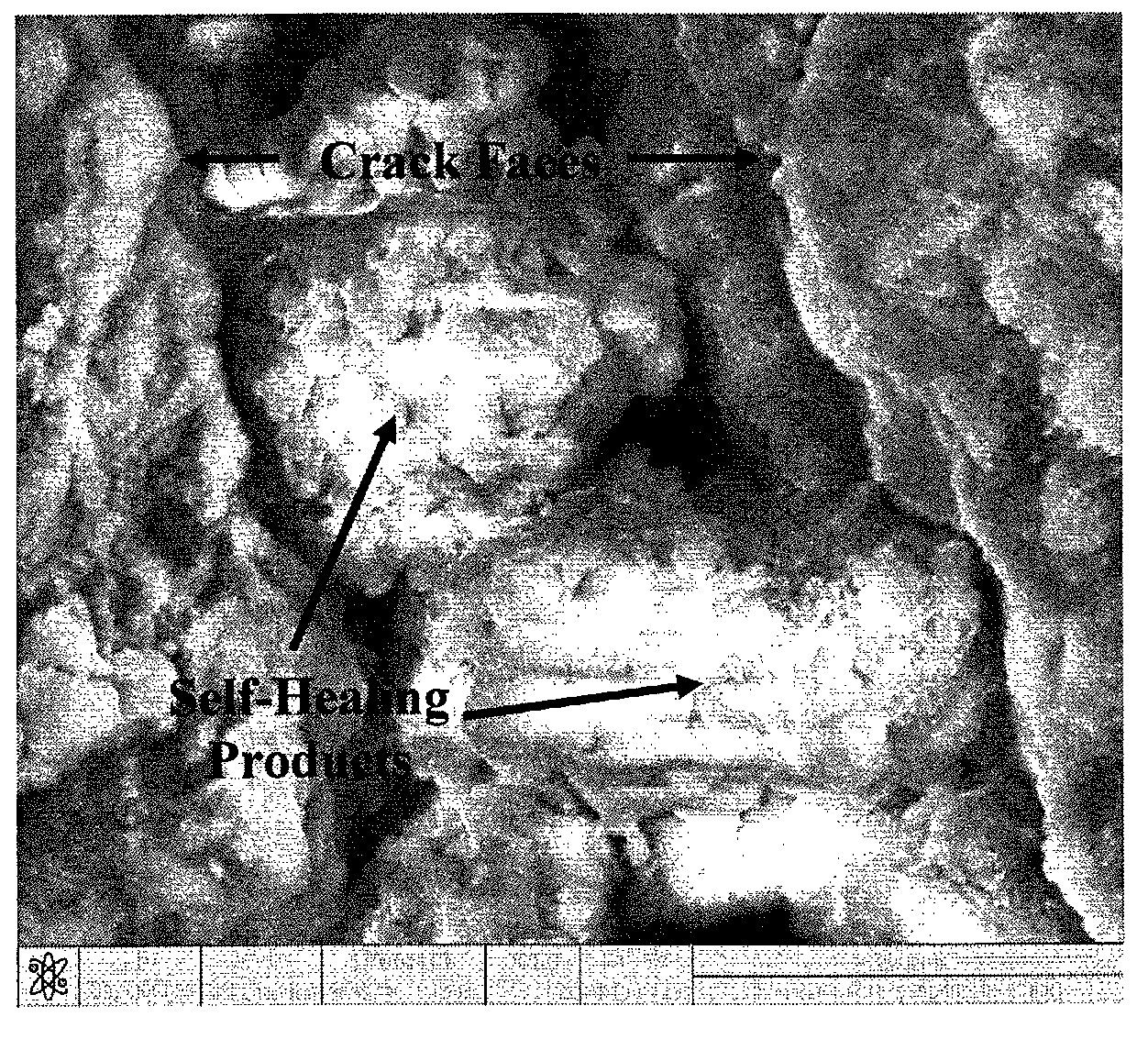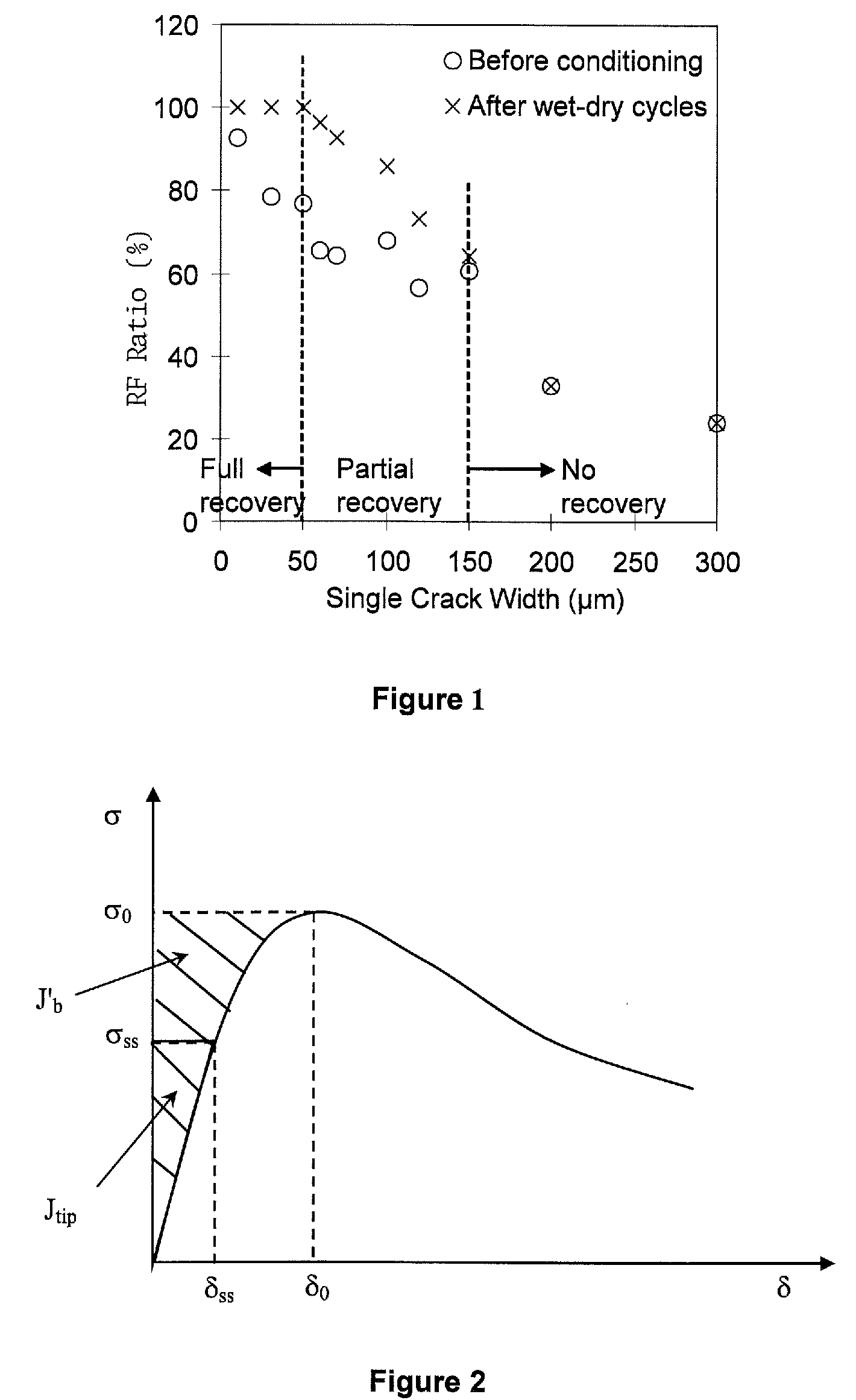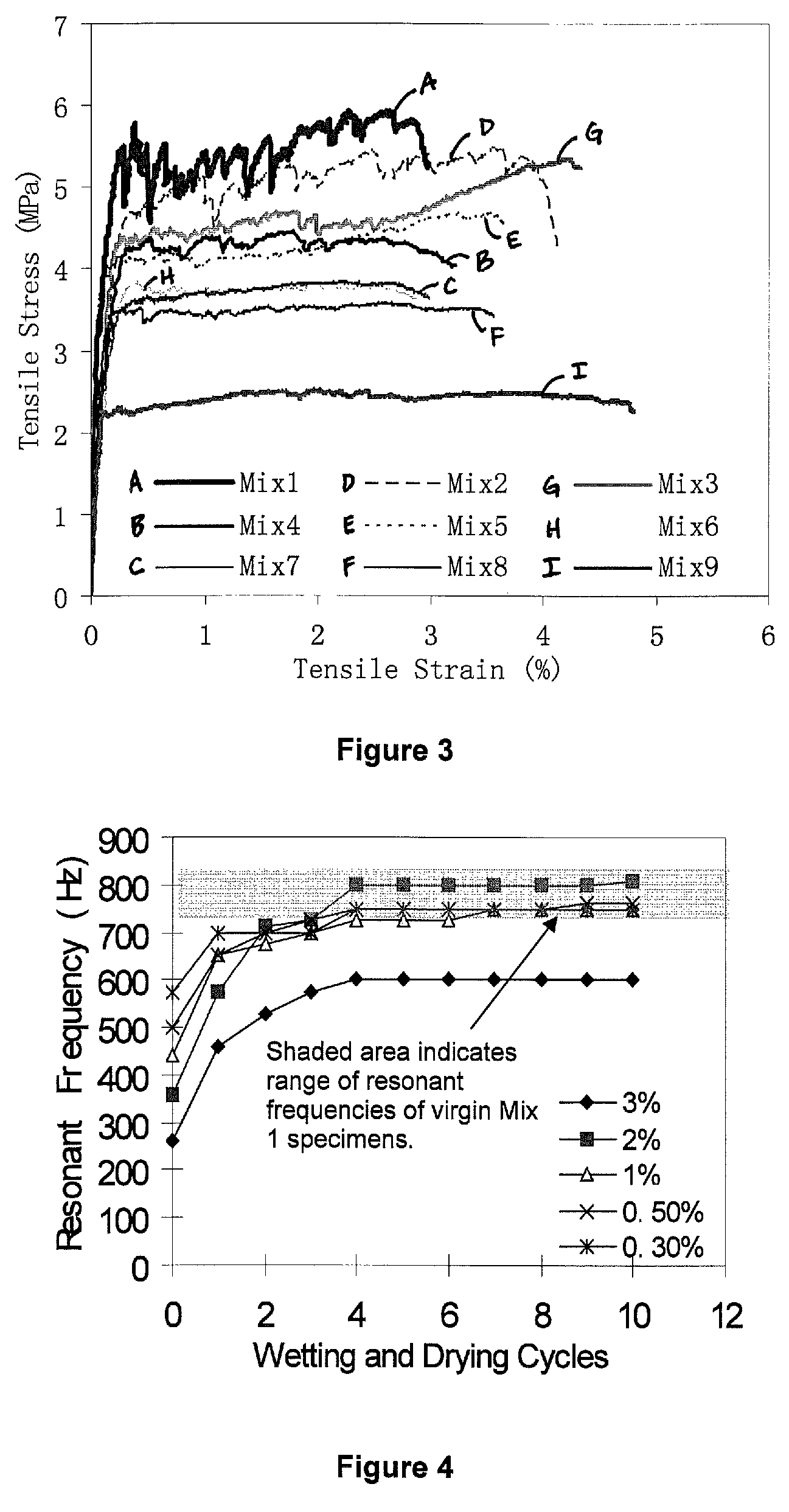Engineered self healing cementitious composites
a cementitious composite and self-healing technology, applied in the field of fiber-reinforced cementitious, can solve the problems of reducing the load capacity and stiffness of the concrete member, cracking of the reinforced concrete member, and many negative effects on the mechanical performance and durability of the reinforced concrete structure, so as to reduce the localized brittle fracture, reduce the impact force and the effect of reducing the impact for
- Summary
- Abstract
- Description
- Claims
- Application Information
AI Technical Summary
Benefits of technology
Problems solved by technology
Method used
Image
Examples
examples
[0052]The exemplary mixes set forth below for preparing self-healing fiber-reinforced cementitious composite comprises cement, water, sand, fly ash, water reducing agent, and discontinuous short fiber, and mix proportions are tabulated in Table 2. The cement used is Type I Portland Cement from Holcim Cement Co., MI, USA. Fine sand with a size distribution from 50 to 150 μm, available as F110 through US Silica Co., MV, USA, is used in some mixes to improve the modulus of elasticity. Low calcium fly ash from Boral, Tex., USA is used in all mixes. The water reducing agent used is superplasticizer available as ADVA Cast 530 from W. R. Grace & Co., Illinois, USA. Two types of short discontinuous polymer fibers, K-II REC™ PVA fiber through Kuraray Co. Ltd of Osaka, Japan, and high tenacity PP (HTPP) copolymer fiber from Redco, Belgium, are used at 2% volume fraction. The properties of the PVA and HTPP copolymer fibers can be found in Table 1.
[0053]
TABLE 2Mix proportions of Examples, parts...
PUM
| Property | Measurement | Unit |
|---|---|---|
| volume fraction | aaaaa | aaaaa |
| compressive strength | aaaaa | aaaaa |
| length | aaaaa | aaaaa |
Abstract
Description
Claims
Application Information
 Login to View More
Login to View More - R&D
- Intellectual Property
- Life Sciences
- Materials
- Tech Scout
- Unparalleled Data Quality
- Higher Quality Content
- 60% Fewer Hallucinations
Browse by: Latest US Patents, China's latest patents, Technical Efficacy Thesaurus, Application Domain, Technology Topic, Popular Technical Reports.
© 2025 PatSnap. All rights reserved.Legal|Privacy policy|Modern Slavery Act Transparency Statement|Sitemap|About US| Contact US: help@patsnap.com



